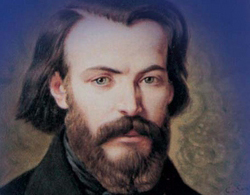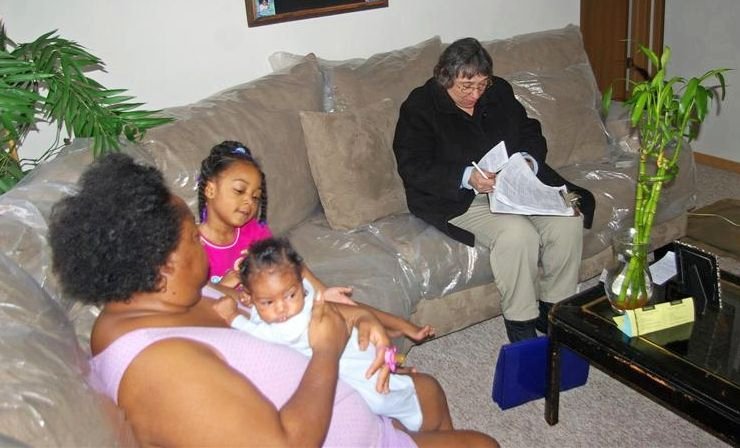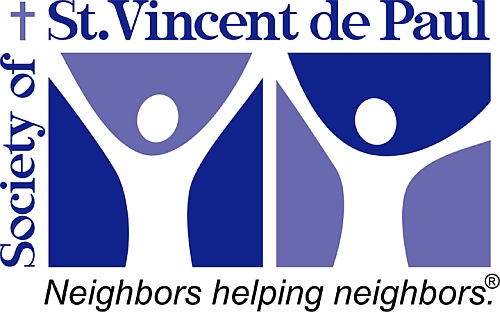This page is in progress

Blessed Fredrick Ozaman In 1833, just before the Third French Revolution in France, a small group of students at the University of Paris gathered under the leadership of a law student, Fredrick Ozaman, to meet the challenge of putting their Catholic faith into action. Under the guidance of a Daughter of Charity, Sister Rosalie Rendu, they would walk across town to the slums to provide what they could for the poorest in the city. This small group of students at first called itself the “Conference of Charity” but soon changed the name to St. Vincent De Paul (SVDP), after a Catholic priest in the 17th century who dedicated himself to serving the poor. The Society of St Vincent De Paul quickly grew worldwide and now is the largest Catholic lay organization in the world with over 700, 000 members in conferences in 142 countries.
Throughout all of this growth the main mission of the Society of St. Vincent De Paul remains the same: “to offer tangible assistance to those in need on a person-to-person basis,” 1 based upon a home visit by two members of a conference to a person in need.

Home Visit In the city of Milwaukee, conferences were based in parishes in the days, as one SVDP central office person called it, “when there was a Catholic Church on every corner.” When there were 17 2 Catholic Churches in the North Central area of Milwaukee this parish based conference system worked. As one pastor of the three remaining Central City parishes pointed out “Seventy years ago most of the parishes in the archdiocese had poor, middle class, and even a few wealthy parishioners as members; and conferences had the internal resources, but in our present social setting there is substantial economic segregation.” 3 For example when the three churches on the north, east and west of the North Central area merged, the new St. Vincent De Paul conference of Blessed Trinity parish served not only the areas of their parish, Holy Redeemer, but also, that of St. Nicholas on the Eastern edge and St. Albert’s on the Northern edge. The same thing happened in 1995 when 11 Churches in the North Central area were merged into 2 Catholic parishes. When Blessed Trinity was closed and dissolved into St. Catherine’s parish, the two conferences were merged into one St. Catherine conference. St. Catherine’s had stopped taking home visits in own geographic boundaries and had focused on serving the needs of the poor families that attended its parish school. At one point, the new St. Catherine SVDP conference was making home visits to persons in need in the old St. Nicholas area, just a few blocks away from another Catholic Church with a SVDP conference and over 10 miles away from St. Catherine’s. However they were not serving the people in need a few blocks from their church, due to outdated church boundaries. The conference changed its boundaries for home visits to areas around the former Blessed Trinity/Holy Redeemer church and its own neighborhood but like the other two SVDP conferences in this poorest, most segregated part of the city, now finds itself overwhelmed.
In the meanwhile by using outdated geographic boundaries the Churches around the North Central area found themselves making fewer and fewer home visits, the ‘heart’ of the Society, and, thus, gradually dying and fading away. In the meanwhile, the three Catholic Churches have been overwhelmed with home visits, often having to refuse home visits for lack of funds for vouchers. Often when someone in need in the North Central area calls the central office for aide and their address is put into an outdated computer system they receive the message that we do not serve this area or we are not serving this area at this time. Due to the central office and board of director’s decisions to keep these outdated boundaries, the area most in need in Milwaukee goes underserved.
To compensate for this system, incompatible with values of the St. Vincent De Paul Society and the practice of conferences over the world, a special needy conference was established for wealthy conferences to donate funds to needy conferences, social service agencies were created by central office, meal programs and food pantries have been established. But there is no substitute to offering “tangible assistance to those in need on a person-to-person basis. It is this personalized involvement that makes the work of the Society unique.” 4
Not counting conference income and expenses for home visits, the central office of St. Vincent De Paul has a two million dollar operating budget, for meal program, store, central office, social worker and staff. Meanwhile the SVDP conferences in the North Central area struggle to survive. An example of this is the conference at St. Catherine’s where the 1.1 million dollars designated for people in need in the North Central area is deposited, had to stop making home visits this summer for lack of money.

Suggestions to use the 1.1 million dollars to serve people in need of home visits by SVDP conferences in the North Central area and ways to restructure how home visits are designated to conferences and to make the Milwaukee SVDP more in line with the spirit of the society have been ignored or been rejected. You can find a flow chart here 5 of a simple restructuring of local St. Vincent De Paul to make it more in line with conferences around the world who focus on the main and unique mission of the Society, sharing our blessings of time, talent or treasure with our brothers and sisters in need, on a person to person basis. 6
St. Vincent De Paul conferences in Milwaukee, that serve the poorest and most segregated area of the city, are stalled. The Separate but Unequal policy of Catholic Church, Archdiocese and Central office of St. Vincent results in discrimination and no equality.